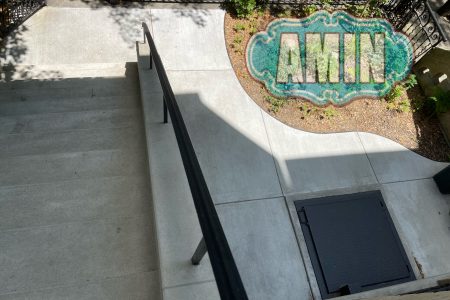New Steps, Grinding and Pointing, Front Courtyard Concrete Floor, Cornice
Location : 298 Windsor Pl, Brooklyn, NY 11218
BROWNSTONE STEPS
Brownstone steps typically refer to the steps leading up to the entrance of a brownstone building. Brownstones are a type of row house characterized by their distinctive brownstone façade, commonly found in city like New York City.
These steps are often made of stone or concrete and are an architectural feature that adds charm and character to brownstone buildings.
The steps can vary in design and style, ranging from simple and functional to elaborate and ornate, depending on the era and architectural preferences. They are typically well-maintained and can be adorned with railings, planters, or other decorative elements.
Brownstone steps not only provide a practical purpose but also contribute to the overall architectural beauty and historical significance of brownstone buildings, making them iconic and recognizable features of many urban landscapes.
Amin Construction provide expert worker on brownstone and we have more then 30 years experience on brownstone work.
GRINDING and POINTING
Grinding and Pointing is a common process in construction, which involves removing damaged or deteriorated mortar from between the bricks of a building and replacing it with new mortar. This process helps to restore the structural integrity of the building and prevent further damage.
If you need assistance with grinding and pointing, we are professional construction company and we have experienced workers, we can help you to provide you with necessary expertise and equipment to complete the project.

FRONT COURTYARD CONCRETE FLOOR
Constructing a concrete floor for a front courtyard can be a durable and aesthetically pleasing choice. Here are some steps that we follow to consider:
- Planning and Design: Determine the size, shape, and layout of your courtyard. Consider any specific features you want to incorporate, such as pathways, seating areas, or decorative elements.
- Site Preparation: Clear the area of any debris, vegetation, or existing materials. Level the ground and ensure proper drainage to prevent water accumulation.
- Excavation and Base Preparation: Dig a trench to the desired depth, accounting for the thickness of the concrete slab. Compact the soil to create a stable base. If necessary, add a layer of gravel or crushed stone as a sub-base for improved stability.
- Formwork: Create the formwork, which serves as a mold for the concrete. Use wooden boards or metal stakes to define the edges of the courtyard and hold the concrete in place during pouring.
- Reinforcement: Depending on the size and expected load of the courtyard, you may need to reinforce the concrete with steel rebar or wire mesh. This helps strengthen the slab and minimize cracking.
- Mixing and Pouring: Follow the instructions on the concrete mix bag to prepare the concrete. Pour the concrete into the formwork evenly, using a shovel or wheelbarrow. Ensure it fills the entire area and is level.
- Finishing: Smooth the surface of the concrete using a bull float or trowel to remove any imperfections and create a consistent finish. You can also add decorative elements or textures if desired.
- Curing and Protection: Cover the freshly poured concrete with plastic or a curing compound to retain moisture and promote proper curing. Avoid foot traffic on the surface until it has fully hardened.


We specialized in Brownstone work, Interior Restoration, Roofing, Pointing Landmarks, and restoring New York City.
Services
-
RESTORATION MANAGEMENTRESTORATION MANAGEMENT
-
BROWNSTONE WORKBROWNSTONE WORK
-
INTERIOR CONSTRUCTIONINTERIOR CONSTRUCTION
-
MASORNY WORKMASORNY WORK
